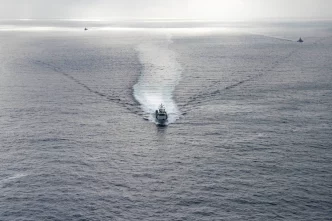Defence Minister Richard Marles will soon receive a report from Admiral William Hilarides on the future of the Royal Australian Navy’s surface fleet. The additional analysis was initiated by the authors of the defence strategic …
Last month, in my article ‘To corvette or to not corvette: the defence strategic review and the Tier 2 surface combatant’, I outlined some of the debates and one specific option for the independent analysis …
A key part of the government’s response to the defence strategic review (DSR) was the establishment of an independent analysis team to examine the Royal Australian Navy’s surface combatant fleet and to report back to …
There’s a growing trend for naval forces to acquire uncrewed surface vehicles (USVs) because of the potential advantages they offer, such as reduced risk and the ability to provide a persistent presence. In a medium-sized …
At an ASPI conference a few years ago, I remarked that I thought that major surface combatants had been obsolete for many decades, and that the only reason we hadn’t noticed was that there hadn’t …
The threat spectrum for surface combatants—ships that can engage air, surface, subsurface and shore targets—is rapidly expanding and increasingly lethal. Threats include mines, torpedoes, cruise missiles, ballistic missiles and swarms of microdrones. This article focuses …
The Washington-based Center for Strategic and Budgetary Analysis recently released a thought-provoking assessment of the US Navy’s plan for its surface forces. Taking back the seas: transforming the US surface fleet for decision-centric warfare is …
Australia must massively reorganise its planned defence structure by selling off most of its surface ships, abandoning those still to be built and replacing them with a fleet of 24 or even 36 submarines and …
As the Asia–Pacific becomes increasingly contested, Southeast Asian nations find themselves courted by a range of Asian powers interested in their strategic locations and burgeoning economies. Both China and India seek to expand their influence …
In my earlier article, I argued that Australia’s most important sea-trade during a time of crisis in Asia is likely to be high-value, low-volume importation of machinery and industrial equipment from Europe and North America. …
Hugh White has yet again kicked the hornet’s nest by questioning the government’s naval ship-building program. In doing so, he’s aroused a swarm of strident defenders of Sea Control, which is the ability to keep …
Hugh White’s column for The Strategist on naval surface ship-building in Australia continued his campaign against such a national effort, but was actually centred on his long standing objection to the maintenance of a capable …













